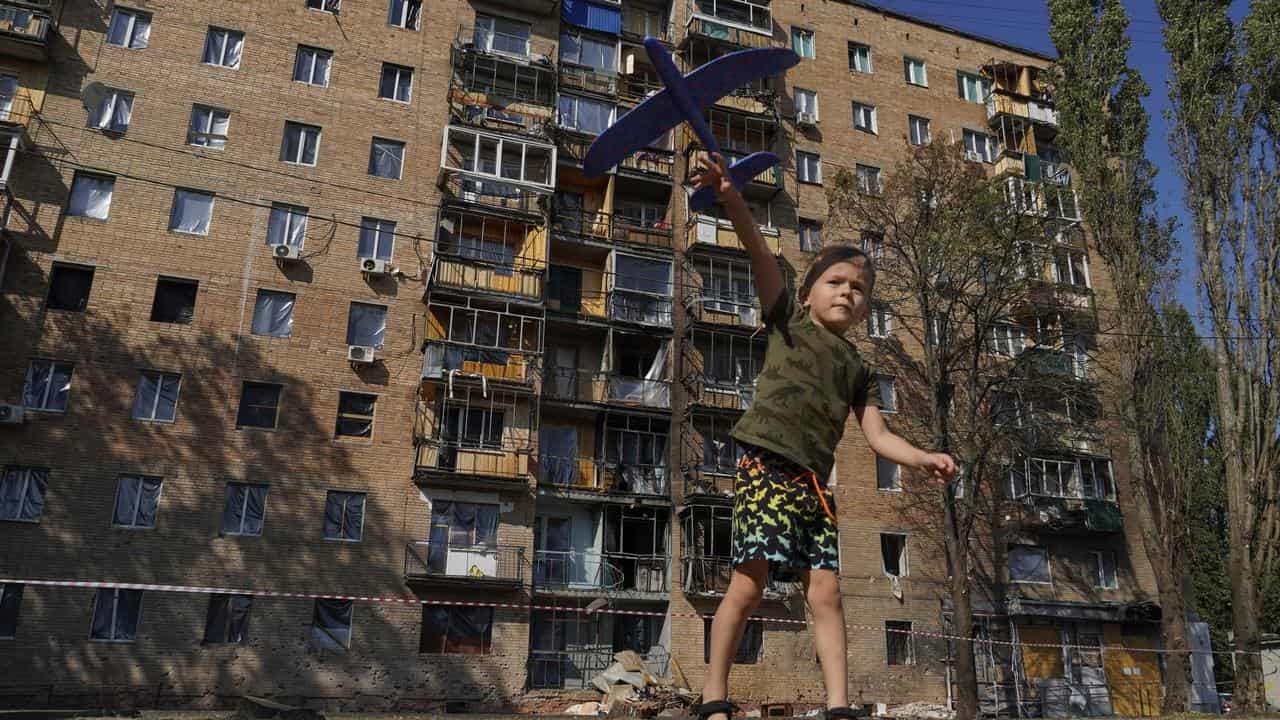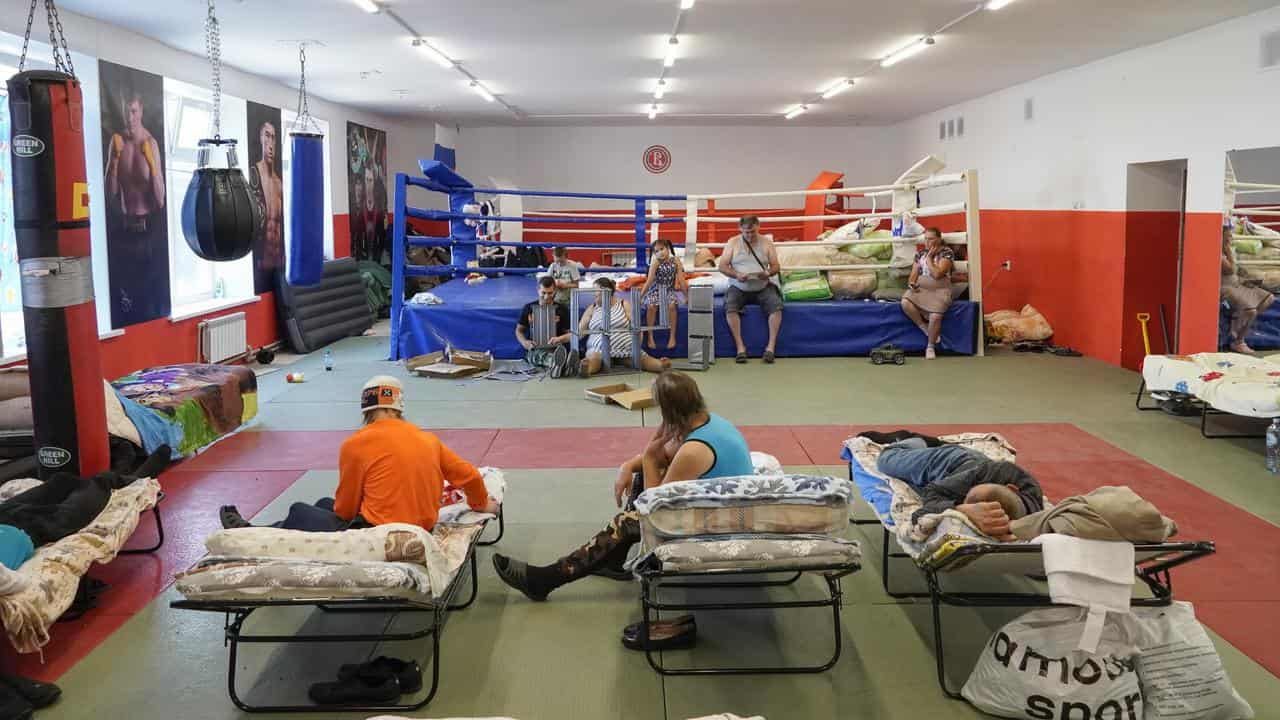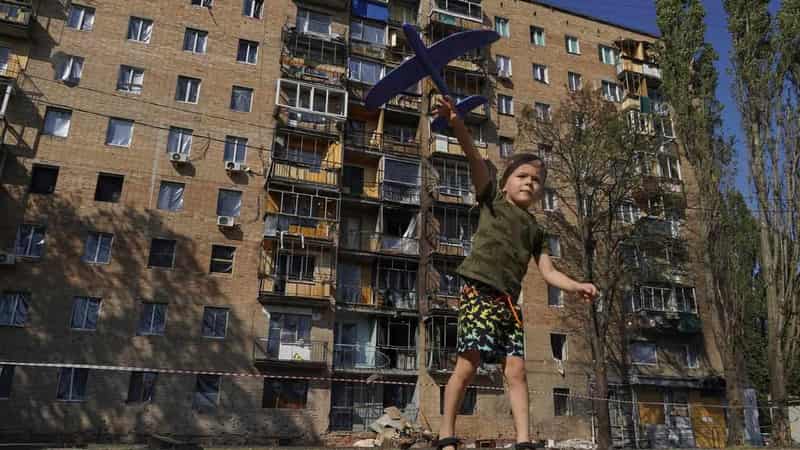
Ukrainian President Volodymyr Zelenskiy says the daring military incursion into Russia’s Kursk region aims to create a buffer zone to prevent further attacks by Moscow across the border.
It was the first time Zelenskiy clearly stated the aim of the operation, which was launched on August 6.
Previously, he had said the operation aimed to protect communities in the bordering Sumy region from constant shelling.
“It is now our primary task in defensive operations overall: to destroy as much Russian war potential as possible and conduct maximum counteroffensive actions. This includes creating a buffer zone on the aggressor’s territory -– our operation in the Kursk region,” he said in his nightly address on Sunday.
This weekend, Ukraine has destroyed a key bridge in the region and struck a second one nearby, disrupting supply lines as it pressed a stunning cross-border incursion.
Pro-Kremlin military bloggers acknowledged that the destruction of the first bridge on the Seim River near the town of Glushkovo will impede deliveries of supplies to Russian forces repelling Ukraine’s incursion, although Moscow could still use pontoons and smaller bridges.
Ukraine’s air force chief, Lieutenant general Mykola Oleshchuk, on Friday released a video of an air strike that cut the bridge in two.
Less than two days later, Ukrainian troops hit a second bridge in Russia, according to Oleshchuk and Russian regional Governor Alexei Smirnov.
As of Sunday morning, there were no officials giving the exact location of the second bridge attack.
But Russian Telegram channels claimed that a second bridge over the Seim, in the village of Zvannoe, had been struck.
According to Russia’s Mash news site, the attacks left only one intact bridge in the area.
The Associated Press could not immediately verify these claims.
If confirmed, the Ukrainian strikes would further complicate Moscow's attempts to replenish its forces and evacuate civilians.
Glushkovo is about 12 kilometres north of the Ukrainian border, and approximately 16 kilometres northwest of the main battle zone in Kursk.
Kyiv previously has said little about the goals of its push into Russia with tanks and other armoured vehicles, the largest attack on the country since World War II, which took the Kremlin by surprise.
The Ukrainians drove deep into the region in several directions, facing little resistance and sowing chaos and panic as tens of thousands of civilians fled.

Ukraine’s Commander in Chief, General Oleksandr Syrskyi, claimed last week that his forces had advanced across 1000 square kilometres of the region, although it was not possible to independently verify what Ukrainian forces effectively control.
In his remarks on creating a buffer zone, Zelenskiy said Ukrainian forces “achieved good and much-needed results.”
Analysts say that although Ukraine could try to consolidate its gains inside Russia, it would be risky, given Kyiv’s limited resources, because its own supply lines extending deep into Kursk would be vulnerable.
The incursion has proven Ukraine's ability to seize the initiative and has boosted its morale, which was sapped by a failed counter offensive last summer and months of grinding Russian gains in the eastern Donbas region.
On Saturday, Zelenskiy urged Kyiv’s allies to lift remaining restrictions on using Western weapons to attack targets deeper in Russia, including in Kursk, saying his troops could deprive Moscow “of any ability to advance and cause destruction” if granted sufficient long-range capabilities.









